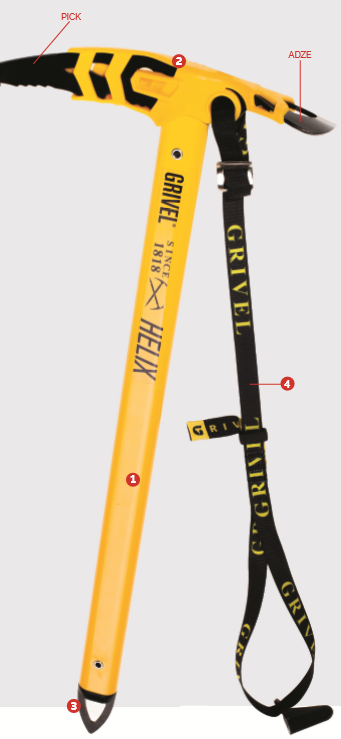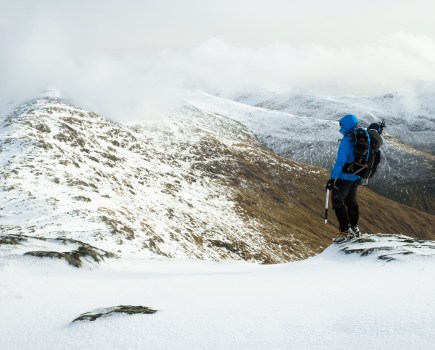
Chris Townsend takes us through the ins and outs of walking axes. Plus which spikes topped the reviews
When there is snow and ice on the hills an ice axe is essential for safety. They also make walking easier and open up the mountains in winter. Without them there are limits to where you can safely go. An ice axe is required on any slope where a slip could result in a long slide or fall.
The choice in axes is large. Many are designed for serious technical climbing though and are unsuitable for hillwalking. Those intended for walkers are usually simpler in design, lighter in weight and less expensive than those designed for graded winter climbs. Axes suitable for hillwalking may be described as being for glacier travel, general mountaineering or ski mountaineering. As walkers generally use ice axes as walking sticks – that is, carry them by the head with the spike pushed into the snow – they should be comfortable held like this. Any slip or stumble can be halted simply by thrusting the axe further into the snow.
If a slide does start, the axe can be used to stop it with a technique called self-arrest (see last month’s issue for advice on these). On any slope where self-arrest might be needed, the axe should be carried with the pick pointing backwards so the axe can easily be swung into the appropriate position. If you have no ambitions to do any technical snow and ice climbing then a lightweight basic axe is all that’s needed. If you do aspire to more difficult ascents a heavier, stronger axe would be better.
Check for this
1. Shaft
Shafts are normally made of aluminium to keep weight down. Some shafts are curved, to make thrusting them in the snow and self-arrest a little easier, though I don’t think this makes any significant difference. Metal is cold to hold and can be slippery so some shafts have rubberised covers on the lower section for warmth and grip.
2. Head
The head consists of a curved pick with teeth on the underside and a short adze. The pick is essential for selfarrest and can be used for security by hitting it into the snow or ice on steep slopes. For hillwalking and general mountaineering the pick should only be slightly curved as this is easier for self-arrest.
For more technical climbing a pick with a steeper curve is usual. The adze curves down slightly and has a scooped end. It’s mostly used for step-cutting. In emergency it can be used as a snow shovel though even the widest ones are poor for this. Heads are normally made of steel as this is tough and holds an edge well. Aluminium is used on the lightest axes as it weighs less than steel. It’s not as strong though and blunts more quickly so is only suitable for occasional use.
3. Spike
The spike is for thrusting into the snow for support and stability. The shape doesn’t matter much for this, nor does the sharpness – spikes blunt quickly anyway. However on icy terrain narrow spikes with finer points penetrate better and are less likely to skid off the surface.
4. Wrist
Loops or Leashes Wrist loops or long leashes mean the axe can’t slide down the slope if you let go of it. However when zigzagging up a slope the axe should always be in your upper hand. A leash can make this more awkward to do as you have to swap it from hand to hand at every change of direction.
5. CE Rating
Ice axes have a CE rating of B (Basic) or T (Technical). Most walking axes are B rated. Climbing axes are T rated, which means they are stronger than B rated axes and suitable for hard usage on rock and ice and for use as belays. If you plan on any graded winter climbs then a T rated axe is a better choice than a B rated one.
6. Weight
The axes reviewed weigh between 280 and 650g. The lighter axes are fine for backpacking and hillwalking. However if you will be using the axe often then heavier ones are better for step cutting and the extra weight can make them feel more secure.
7. Length
The correct length for an ice axe is debatable. Climbers usually prefer shorter axes. For walkers I think axes that reach the ankle bone when held at the side are best as these can be used for support on gentle slopes without having to stoop and are easier to thrust into the snow below you during descents.
Note: ice axe weights are without leashes
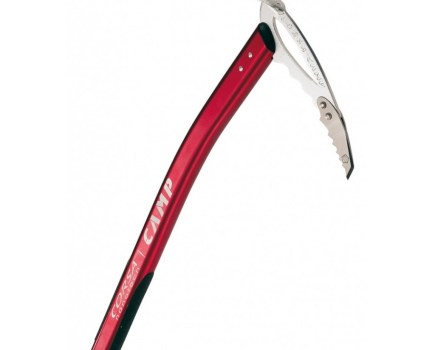
CAMP Corsa Nanotech
The Corsa Nanotech is the lightest ice axe available with a steel pick. Indeed, the only lighter weight axe of any sort is the aluminium CAMP Corsa. It is expensive but for lightweight backpacking or any trip where weight matters it’s a good choice…
Click here to read the full review
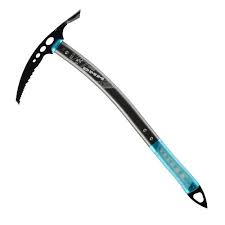
DMM Cirque walking axe
This is the only axe reviewed with a T rating. Unsurprisingly it’s also the heaviest. It’s the one to choose if you are planning on mountaineering routes rather than hillwalking...
Click here to read the full review
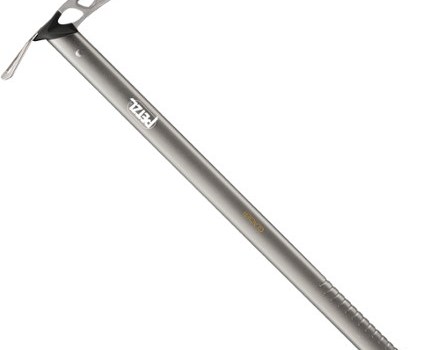
Petzl Glacier
Petzl’s new Glacier ice axe is excellent. It’s lightweight, reasonably priced and well designed. The pick has plenty of teeth and bites easily into hard snow…
Click here to read the full review
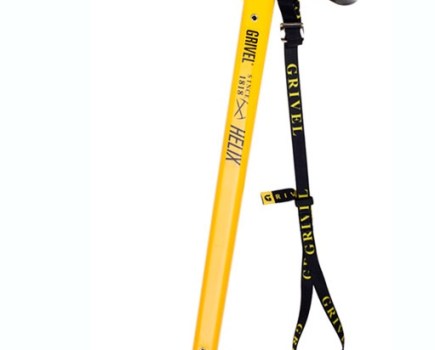
Grivel Helix
The Grivel Helix is a near perfect walking axe with a unique feature that does make a noticeable difference…
Click here to read the full review

Black Diamond Raven Ultra
The Raven Ultra is a perfectly good lightweight axe with a narrow pick with plenty of teeth on the underside…
Click here to read the full review

